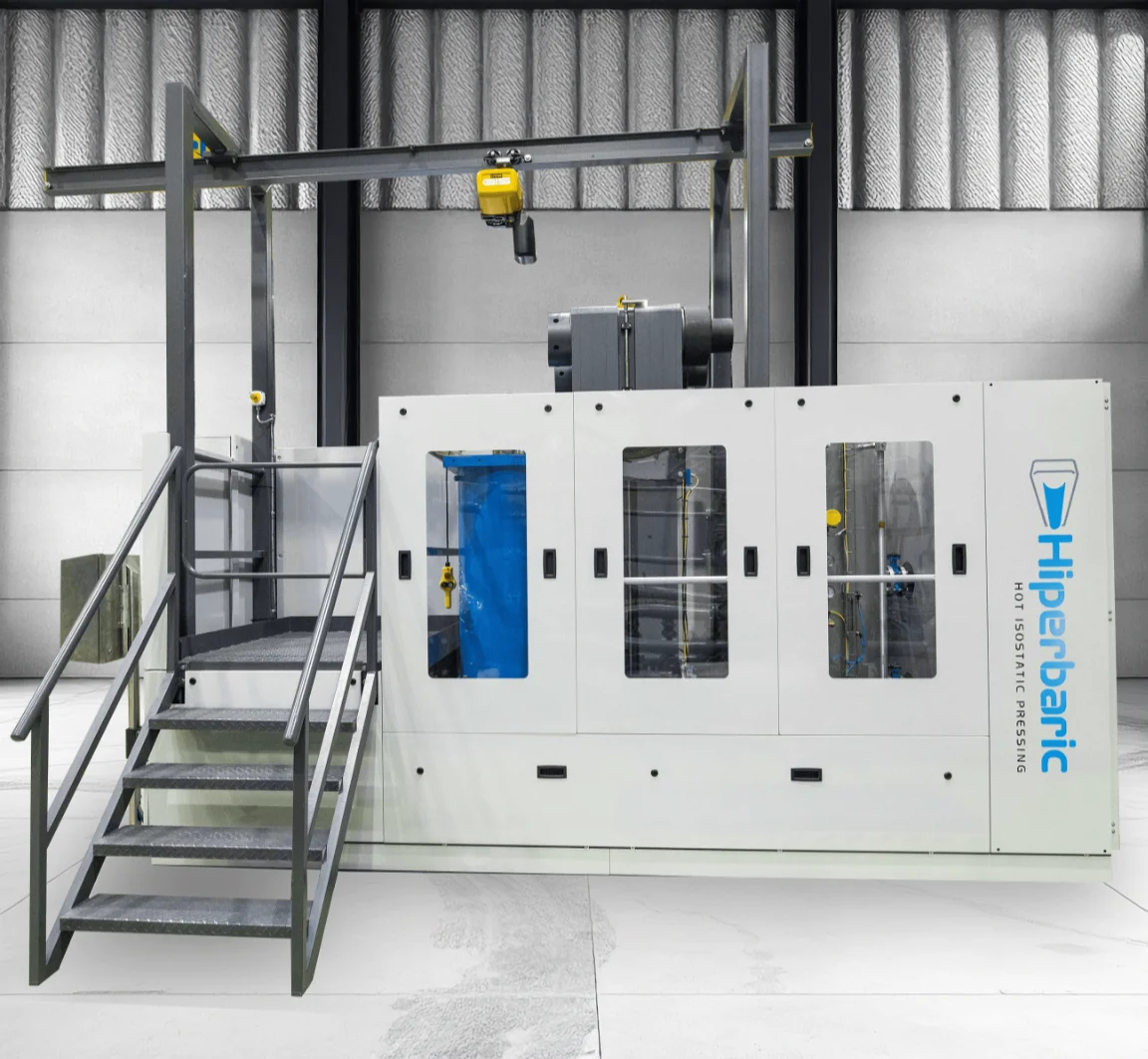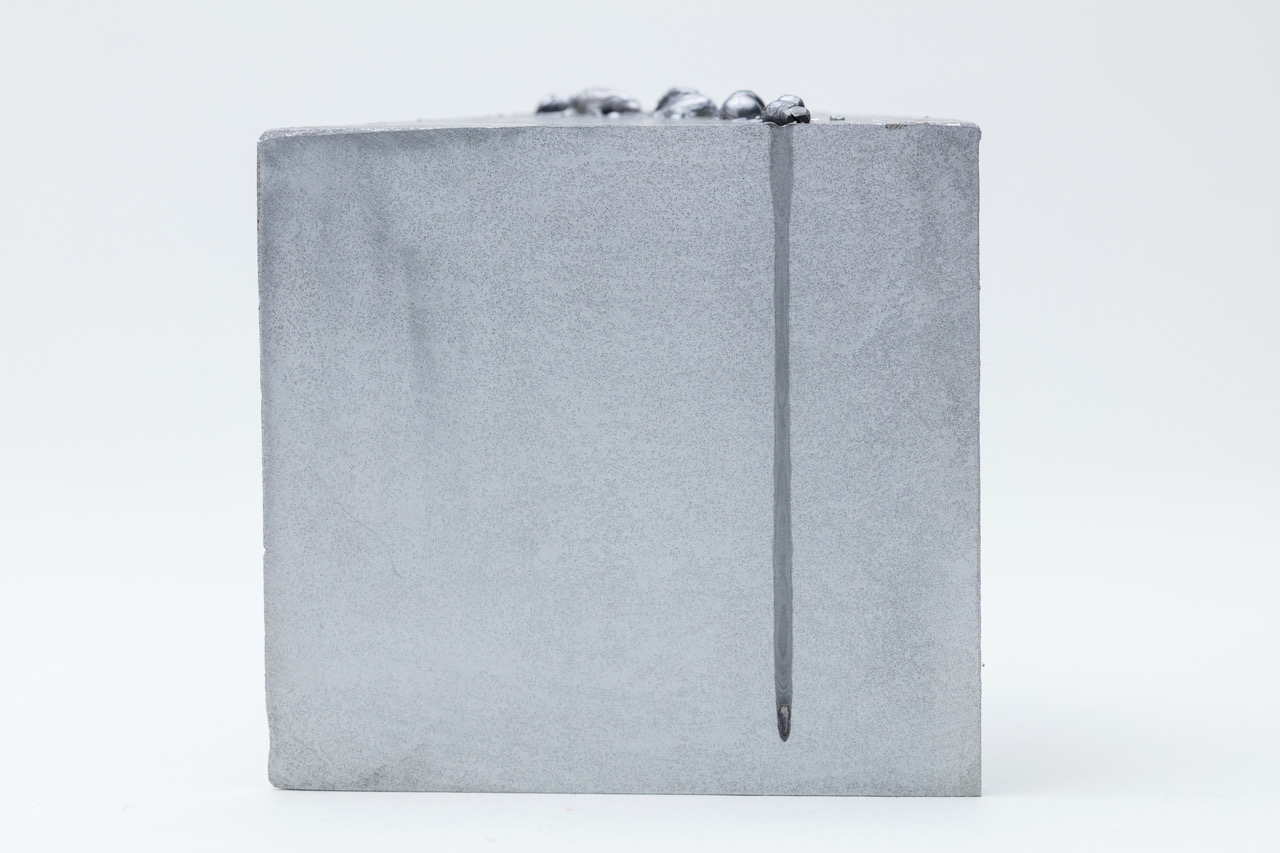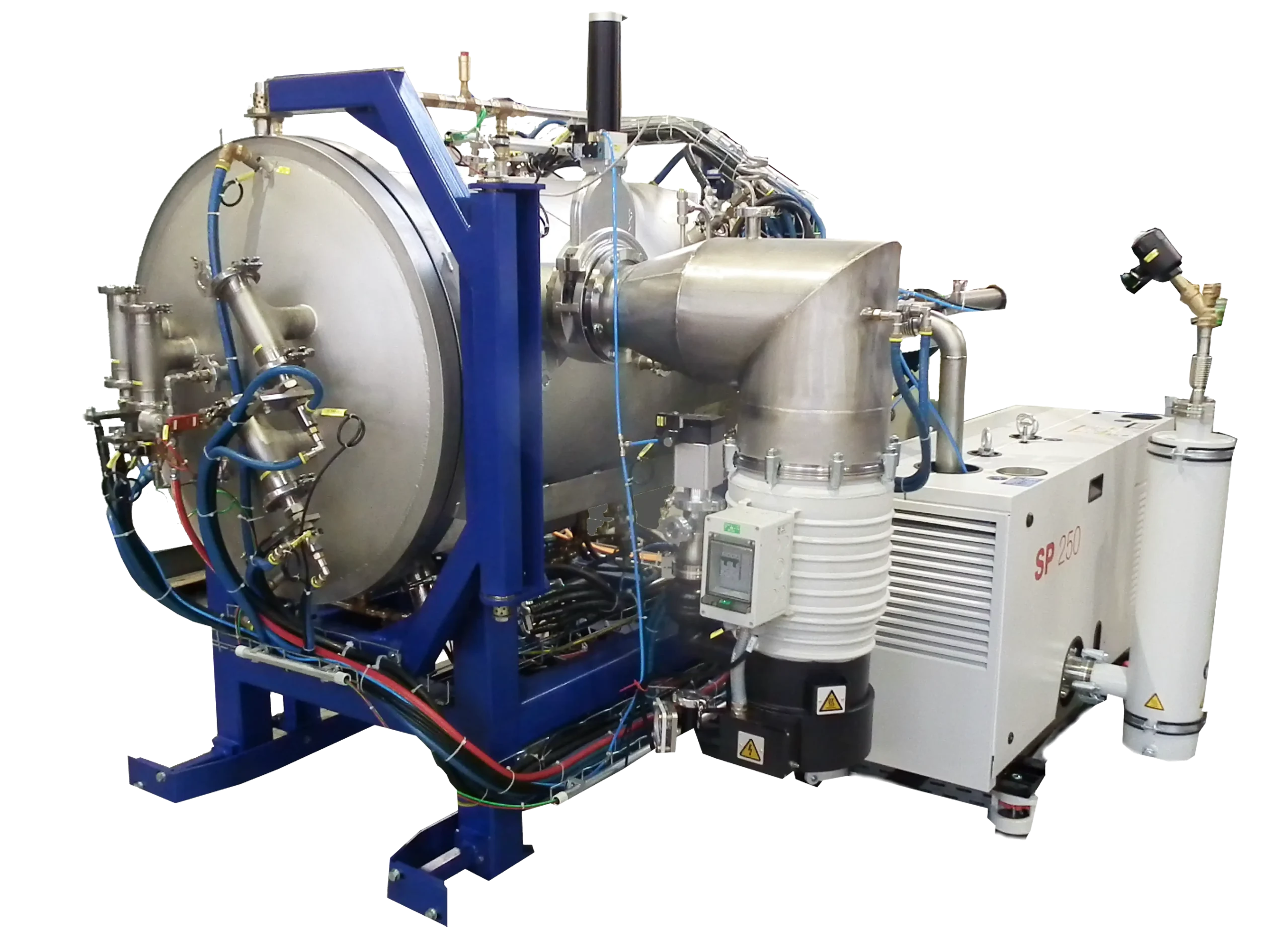Introduction
Hot Isostatic Pressing (HIP) is a critical process for producing dense, defect-free titanium alloy components with enhanced mechanical properties. This process is especially vital for high-performance applications, such as in aerospace and medical industries, where internal porosity, gas inclusions, and other impurities can compromise performance.
For titanium, which is highly reactive with carbon, nitrogen, and especially oxygen, controlling exposure to these elements during the HIP process is essential to prevent the formation of carbides, nitrides, and brittle alpha-case layers and to preserve the component’s integrity.
This article outlines advanced strategies used in HIP to minimize oxygen contamination, including the use of getter materials, optimized Argon handling through smart heat treatment cycle design, and precise process control.
The Challenge of Oxygen in Titanium Processing
Titanium’s strong affinity for oxygen presents unique challenges during HIP:
- Alpha-case formation: This brittle, oxygen-enriched layer forms on the surface when oxygen diffuses into the metal at elevated temperatures, degrading key mechanical properties like toughness and ductility (Leyens & Peters, 2003).
- Dependence on temperature and time: Oxygen reaction and diffusion rates increase with higher temperatures and longer exposure times. Therefore, minimizing the time the component spends at elevated temperatures is critical (Donachie, 2000).
The Role of Getter Materials: Titanium Chips
Getter materials play a crucial role in the Titanium HIP process to reduce residual oxygen in the furnace chamber. These materials, often in the form of titanium chips left over from machining processes, are placed strategically within the furnace to react with and neutralize oxygen.
Why Titanium Chips Are Effective
- High surface area: Titanium chips offer a large reactive surface area, significantly enhancing their ability to scavenge residual oxygen (Bose & Ke, 2010).
- Reaction efficiency: At elevated temperatures, titanium readily reacts with oxygen to form stable oxides, effectively reducing the amount of oxygen available to interact with the titanium component (Boyer et al., 1994).
Strategically utilizing getter materials minimizes the risk of contamination and ensures the integrity of the titanium component during HIP.
Argon Quality and Oxygen Control
Argon is the inert gas used to create a controlled atmosphere in the HIP process, playing a vital role in minimizing contamination and ensuring the integrity of titanium components. The purity of the Argon is critical, as any residual oxygen in the gas leads to contamination and the formation of brittle alpha-case layers on the titanium surface.
Key Measures for Argon Quality Control
- High-purity Argon (5.0 quality) is used, containing ≤ 2 ppmv (parts per million by volume) of oxygen. This ensures the gas entering the system has an ultra-low oxygen content (Kutz, 2018).
The Effect of High Pressure and Temperature on Oxygen Concentration
- While Argon 5.0 quality has minimal oxygen content under ambient conditions, the concentration of oxygen increases significantly at elevated pressures under isochoric conditions.
- “For example, at 2000 bars and 1000°C, the total amount of oxygen present in the Argon gas can be several hundred times greater than at ambient pressure and temperature. This is because compressing the gas under such high pressures greatly increases the density of the gas (both Argon and oxygen are in their supercritical phase), and the absolute amount of oxygen (even at ≤ 2 ppmv) scales with the total Argon/O₂ density” (Murr, 2012, p. 117).
By understanding and addressing this phenomenon, manufacturers can implement measures to further minimize oxygen exposure during the HIP process.
The HIP Process: A Strategy to Minimize Oxygen Exposure
The HIP process for titanium alloys is meticulously designed to limit oxygen exposure at every stage. Below is a detailed breakdown of the optimized cycle:
1. Preparation: Vacuum Purging and Argon Backfilling
- The pressure vessel and integrated hot zone are vacuum purged to remove air and reduce oxygen levels (Totten & Mackenzie, 2003).
- The vessel is backfilled with Argon 5.0, creating a clean environment for heating.
- This vacuum-purge and Argon-backfill cycle can be repeated multiple times to further dilute residual oxygen.
2. Heating Phase: Controlled Atmosphere
- Convective heating: The initial heating phase (up to ~300°C) is carried out under a low Argon pressure (~2 bar) to leverage efficient convective heat transfer at lower temperatures.
- Fine vacuum or partial Argon pressure: Once above 300°C, Argon can be evacuated again to achieve fine vacuum or a reduced Argon partial pressure, ensuring further oxygen reduction before entering the high-pressure phase.
3. Dwell Phase: High Pressure and High Temperature
- For example, an additively manufactured Ti-6Al-4V (Ti64) component can be heated to just below the beta transus temperature (930°C ±5°C) under high pressure (1200 bar / 120 MPa) in an Argon atmosphere and held at this condition for approximately two hours (Donachie, 2000, p. 95).
4. Rapid Cooling: Alloy Stability
- “Faster cooling also minimizes both oxygen diffusion time and diffusion rate, reducing the risk of alpha-case formation and maintaining the integrity of the component” (Boyer et al., 1994, p. 273).
- “After fast cooling (quenching), the structure ideally contains α′ martensite or a fine α + β mix. However, this may be achievable in HIP only for components with thin wall thicknesses” (Leyens & Peters, 2003, p. 214).
Aging and Stress Relief in a High Vacuum Atmosphere
Aging to enhance the strength and stability of HIP-treated and quenched titanium components should be performed in a high vacuum atmosphere to prevent further exposure to oxygen and eliminate the risk of contamination.
Proper stress relief helps minimize residual stresses, ensuring dimensional stability and maintaining mechanical integrity in high-precision applications. “Since the components are already machined, it is strongly recommended to conduct stress relief in a high vacuum atmosphere (< 1 × 10⁻⁵ mbar) at 600°C, with the furnace leak rate meeting aerospace standards for titanium alloys” (Totten & Mackenzie, 2003, p. 421).
References
Bose, S., & Ke, D. (2010). Additive manufacturing technologies: Rapid prototyping to direct digital manufacturing. Springer.
Boyer, R., Welsch, G., & Collings, E. W. (1994). Materials properties handbook: Titanium alloys. ASM International.
Donachie, M. J. (2000). Titanium: A technical guide. ASM International.
Kutz, M. (2018). Handbook of materials selection. John Wiley & Sons.
Leyens, C., & Peters, M. (2003). Titanium and titanium alloys: Fundamentals and applications. Wiley-VCH.
Murr, L. E. (2012). Metallurgy and microstructure of additive manufactured materials. Elsevier.
Totten, G. E., & Mackenzie, D. S. (2003). Handbook of aluminum: Volume 2, alloy production and materials manufacturing. CRC Press.










